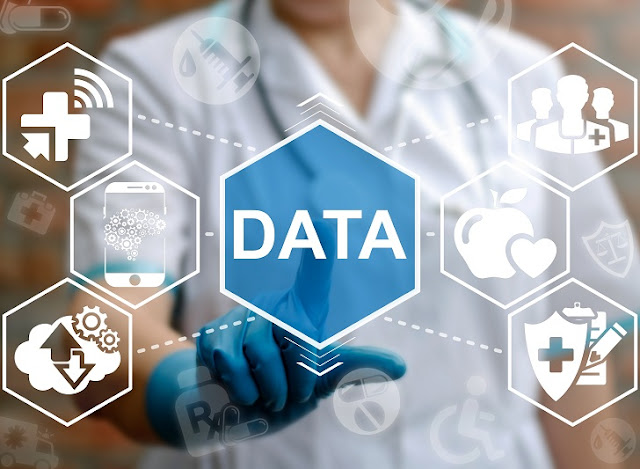Improving EHR data
integration and integrity can optimize patient health outcomes and save
healthcare organizations money.
Regulatory pressures have persuaded almost all healthcare
organizations crosswise over care settings to engage in EHR use. Be that as it
may, issues with EHR data integration and data integrity still banish a few
hospitals and health systems from getting the most incentive out of clinical
EHR use for the advantage of enhanced patient health results and association
reserve funds.
Coordinating diverse sorts of data into
EHR systems and
health data exchange can enable healthcare organizations to get more out of
their EHR systems, while firm health data governance policies can enhance EHR
data integrity.
EHR DATA INTEGRATION
Coordinating a wide assortment of data composes into EHRs
can offer providers a more far reaching perspective of patient health for
better-educated clinical decision-production.
Most systems at present offer providers access to patient
statistic information, medical histories, allergy and medicine records, lab
test comes about, and other sorts of information through patient EHRs.
Nonetheless, social determinants of health data are still to a great extent
truant from clinical data.
The Centers for Disease Control and Prevention (
CDC)
characterize social determinants of health as the states of the spots where
individuals live, learn, work, and play that influence a person's level of
health dangers. Temperamental lodging, low pay, hazardous neighborhoods, and substandard
instruction can intensify numerous health dangers and contrarily influence
results.
Past confirmation has demonstrated the benefit of
coordinating social determinants of health data into patient EHRs. One 2017
examination in the
Journal of the American Board of Family Medicine (
JABFM)
discovered standardizing social determinants of health data gathering and
introduction in EHR systems can enhance patient and population health results
in community health centers.
Analysts working with
Oregon Community Health Information Network (
OCHIN) created approaches to streamline social determinants of health
data accumulation, show the data in EHR systems, and incorporate the data into
physician work processes.
At last, specialists discovered recording a patient's social
determinants of health data in EHRs may permit care groups to use the
information for more complete, exact patient care conveyance and care
coordination.
"Systematically reporting patients' SDH data in EHRs
could help care groups fuse this information into patient care, for instance,
by encouraging referrals to community assets to address recognized
necessities," they composed. "This could be particularly useful in
'wellbeing net' community health centers, whose patients have higher health
dangers than the general US population."
While analysts have discovered proof to help the theoretical
estimation of social determinants of health data integration, few healthcare
organizations have understood the advantages of using this sort of information
in patient EHRs.
A joint pilot venture by Methodist Healthcare Ministries of
South Texas and the state's
health information exchange (
HIE) — HASA — will
soon try investigate by connecting social determinants of health data to EHRs.
Methodist Healthcare Ministries awarded HASA a $175,000 to
expand its services to incorporate social determinants of health data. HASA
will incorporate this data into its clinical data dump through a cloud-based
application.
The program will give physicians a more comprehensive
perspective of patient health that incorporates clinical, social, and
behavioral dangers. With the expansion of social determinants of health data,
care groups will have the important information to interface patients with
community services fit for diminishing the requirement for crisis visits.
On the off chance that effective, the program could decrease
the cost of crisis services for the community and enhance health results for
patient populations especially influenced by social or behavioral conditions
that enlarge certain health dangers.
Incorporating a more extensive assortment of data composes
in health data exchange could likewise enhance patient health results.
EHR DATA INTEGRATION
IN HEALTH DATA EXCHANGE
Health data exchange and interoperability have enhanced as
of late because of health IT development and partner coordinated effort. Be
that as it may, an absence of image data integration because of restricted
information exchange keeps imaging from having a more huge impact on proficient
clinical decision-production.
A current
American Journal of Managed Care (
AJMC) ponder
indicated demonstrative EHR data sharing between various health systems was
related with higher patient mortality scores for patients with heart
disappointment. In the mean time, data sharing between providers inside a
similar health system was related with bring down patient death rates and
enhanced health results.
Scientists contemplated data sharing between various health
systems might be ineffectual to some extent because few healthcare
organizations have coordinated image data into patient EHRs or exchange. For
instance, exchange of radiology reports might be restricted by an absence of
radiology images in patient health records.
"This may halfway record for the differential between
offering to providers inside and outside of systems because physicians inside
the system might have the capacity to get to the source images through other
means when important," composed specialists. "Hospitals that
illuminate the correspondence challenges related with EHR data might have the
capacity to fundamentally diminish patient readmissions and mortality."
Enhancing image data integration in EHRs and health data
exchange may enhance demonstrative data sharing between health systems. With
more entire EHR data, providers can convey more exact care to bring down death
rates and enhance patient health results.
Healthcare organizations can further enhance care exactness
by streamlining health data integrity.
EHR DATA INTEGRITY
While EHR data integration can expand the measure of
information accessible to providers, guaranteeing an abnormal state of data
integrity is important to empowering powerful patient care.
As per AHIMA, "data integrity implies that data ought
to be finished, precise, predictable, and up and coming."
Incorporating off base or obsolete data in EHRs gives little
an incentive to providers. One late AJMC contemplate discovered EHR issue
records are especially ailing in data integrity and are not sufficiently
precise for chance change.
EHR issue records include patient findings went into EHR
systems by clinicians amid patient visits. Outpatient health records often
depend on EHR issue records to distinguish conditions. In any case, these
rundowns are not refreshed on a reliable premise. Scientists noted EHR issue
records are just incidentally refreshed by managerial or clinical staff.
Furthermore, these rundowns are generally off base.
"Future judgments are likewise gathered in total
without termination dates for time-constrained or discount conclusions, and
some issue records are truncated to the most ebb and flow issues, which can
accidentally preclude major incessant analyses," composed scientists.
Because of the poor data integrity of EHR issue records, EHR
issue list-based comorbidity evaluations had poor affectability for
distinguishing real comorbidities.
"In spite of enthusiasm for gaining by promptly
accessible issue list data in the EHR for motivations behind hazard alteration,
our discoveries recommend that these data ought to be approved before
application to execution evaluation," composed scientists. "The
affectability of the VA issue list for distinguishing normal real comorbidities
was poor, running from 1 percent to 46 percent, contrasted and manual
free-content note reflection."
The error of EHR issue records in distinguishing real
comorbidities for hazard change could have negative money related outcomes for
physicians as the healthcare business advances to esteem based care. Physicians
and physician bunches in
accountable care organizations (ACOs) must report
certain quality measures to CMS to procure incentive payments.
"Missing a substantial strategy for modification for
comorbidity, it isn't conceivable to certainly recognize physicians or
gatherings who give poor care and the individuals who excessively observe
patients with more noteworthy disease load," expressed specialists.
"Because measures of nature of care are presently being
fixing to pay in programs like esteem based acquiring, the stakes are higher
and the outcomes of blunders in execution appraisal are significantly more
generous," they included.
Keeping in mind the end goal to successfully use EHR issue
records for hazard alteration, healthcare organizations would need to enhance
their health data governance policies.
Enhancing health data governance techniques can support data
integrity and enhance the quality and exactness of EHR data for an assortment
of uses. With solid health data integrity and different EHR data integration,
healthcare organizations can outfit providers with more total patient
information for ideal care conveyance.





